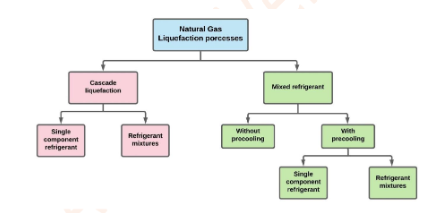Research Success Stories
The free piston linear expander (FPLE) is an energy conversion device that converts mechanical energy into electric energy by using a linear electric machine (LEM) without emission. This research addresses the numerical modeling of a dual-piston air-driven FPLE constructed on the basis of the free piston engine linear generator (FPELG) concept. The model was built in MATLAB/Simulink. The simulation results were in good agreement with the experimental data. Where the in-cylinder pressure and displacement profiles attained errors of less than 10% (within the acceptable range). Then, the predicted results of the simulation model, namely, the displacement profile, in-cylinder pressure, piston velocity, and engine power results were analyzed. Findings indicate that intake pressure was the most important parameter for enhancing engine performance. The in-cylinder pressure increased by approximately 16% and 21.7% when the intake pressure was increased from 5 to 6 bar and from 6 to 7 bar, respectively. The piston velocity increased by approximately 12.3% when the intake pressure increased by 1 bar. Finally, engine power increased by approximately 26.5% and 30.6% when the intake pressure increased from 5 to 6 bar and from 6 to 7 bar, respectively.
Posted on: March 2022
Authored: A Rashid A Aziz
Globally, 150-170 billion cubic metres of gas are being flared annually from petroleum refineries, petrochemical industries and from landfills. In this paper, we critically review the flaring technology, the impact of flare gas on the environment, and recovery options. We also discuss flare gas challenges such as technical, structural, economic, and regulatory challenges. We found that ground flaring is preferred whenever the facility is situated in a highly populated area or close to an aviation zone. Gas flaring produces major pollutants including benzene, benzopyrene and toluene. The recovery of this gas should be intensified to minimise impacts.
Posted on:November 2021
Authored: A Rashid A Aziz
Crank-rocker (CR) engine is a new kind of combustion engine that has a curved-cylinder combustion chamber. To enhance CR engine development and performance, high accuracy modeling which accurately predicts combustion characteristics is required. Due to the difference in cylinder configurations, the first empirical-model used to predict the combustion characteristics of a conventional engine may not be applicable. Currently, only a single correlation model has been proposed for CR engine. The main aims of this study are to improve the existing developed CR engine model and to investigate the impact of various heat transfer correlations in predicting combustion characteristics using single-zone combustion modeling. The model has been improved by including a sub-model of the specific heat ratio which varies with temperatures. Four cases of models incorporating various heat transfer correlations namely Woschni, Sitkei, Hohenberg, and Annand have been simulated. Then, the results were analyzed and compared with experimental data. Further simulations have been carried out to predict maximum pressures, temperatures, heat transfer coefficients, etc. under various loads. Annand's model was found to yield the best prediction for the combustion characteristics and it is considered the best choice concerning the accuracy and other criteria such as time and ease of usage.
Posted on: June 2021
Authored: A Rashid A Aziz
In the pursuit to improve thermal and fuel efficiencies of internal combustion engines, various engine designs and configurations have been developed over recent years. Since the progress in this field keeps on increasing continuously, the geometrical aspects of combustion chamber and the engine configurations and their effects on the in-cylinder air/fuel mixing, turbulence and fuel combustion are becoming more relevant than ever. Due to this, there lies an impending need for a critical analysis of current in-cylinder flow analysis techniques available, their application on different engine types and the results acquired from the studies. Several new flow measurement technologies have emerged and for the past ten years, a critical analysis of airflow capturing methods within IC engines has not been done despite its great significance. This review presents a short yet a meaningful understanding to the analysis techniques for engine in-cylinder flows during the intake and compression of air and fuel, while bringing out significant findings from individual works, resulting in pointing out the strengths and accuracies of these techniques. In the reflection of reviewed studies, explicit analytical schemes and formulations bearing least errors compared to experimental results, are suggested.
Posted on: June 2021
Authored: A Rashid A Aziz



